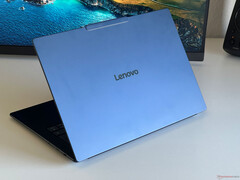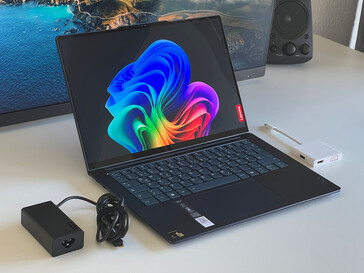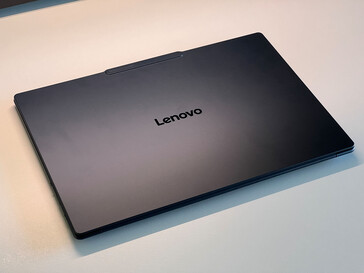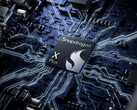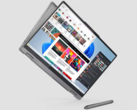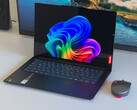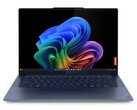We just tested the new Lenovo Yoga Slim 7x 14 G9, which is the first Yoga model using one of the new Snapdragon processors from Qualcomm. In this case, it is the smallest Snapdragon X-Elite chip, the X1E-78-100, which offers 12 cores but no dual-core Turbo. In the native applications, the performance is still very good, although it is unable to maintain the multi-core performance for long. You also have to consider that the chip probably needs more than 50 watts of power for the full 3.4 GHz. (Since exact values cannot be determined, our estimate is based on the measured overall power consumption of the whole system.) Under high load, particularly of the processor, the cooling will then make itself clearly noticeable. With simpler everyday tasks, however, the system remains very quiet for long stretches of time. The battery life also turns out very good, particularly when considering the high-resolution 3K OLED touchscreen with a 120 Hz refresh rate.
But if you are interested in a new laptop with a Snapdragon processor, you also have to keep in mind that there might be some compatibility problems. The ARM processor requires a corresponding ARM version of Windows and also the corresponding applications. Most of the x86 applications can be emulated by the system, which in the best case will only reduce the performance a bit. But you might also run into some more significant problems or at times some apps simply might not run. In addition, there will be problems with peripheral devices that need their own drivers, such as controllers, external sound cards, or even some older printers and scanners. Games are also problematic. Many of the more popular current applications already offer some native versions, and Qualcomm itself lists them in the corresponding overview. As long as you remain within this ecosystem, you shouldn't run into problems, but whether there will be more native app versions in the future mainly depends on the success of the current Snapdragon models. It is not possible to directly compare this situation with Apple's switch to ARM processors, since with Intel, there continue to be x86 versions on the market, while Apple gradually switched all their products to ARM chips.
With an MSRP of 1,599 Euros (~$1,767), the Yoga Slim 7x 14 G9 is by no means an affordable device and even costs 300 Euros (~$331) more than the Intel model Yoga Slim 7i 14 G9 with a Meteor Lake processor (Core Ultra 7 155H) that is also equipped with 32 GB of RAM. The only other difference is the display, since the Intel Yoga is - at least currently - only available with a 1200p OLED (60 Hz) display. The display in the Slim 7x is better without any doubt, which leads us to the question why Lenovo is offering it exclusively for the ARM model and whether this is really worth an additional 300 Euros. If we also consider the large marketing campaign, it looks like Lenovo wants to give preferential treatment to the Snapdragon models. We are curious whether there will be an update with the coming Lunar Lake chips from Intel and whether those will then also get the better display. Until now, a G9 model with one of the new Zen 5 chips from AMD has not been announced yet.
If you are willing to pay the higher price for the better display and slightly longer battery life while also accepting the limitations in your choice of apps, the Yoga Slim 7x 14 G9 might be a good choice, although we think that high price will be problematic. You can find all the details on the Yoga Slim 7x in our extensive review.




